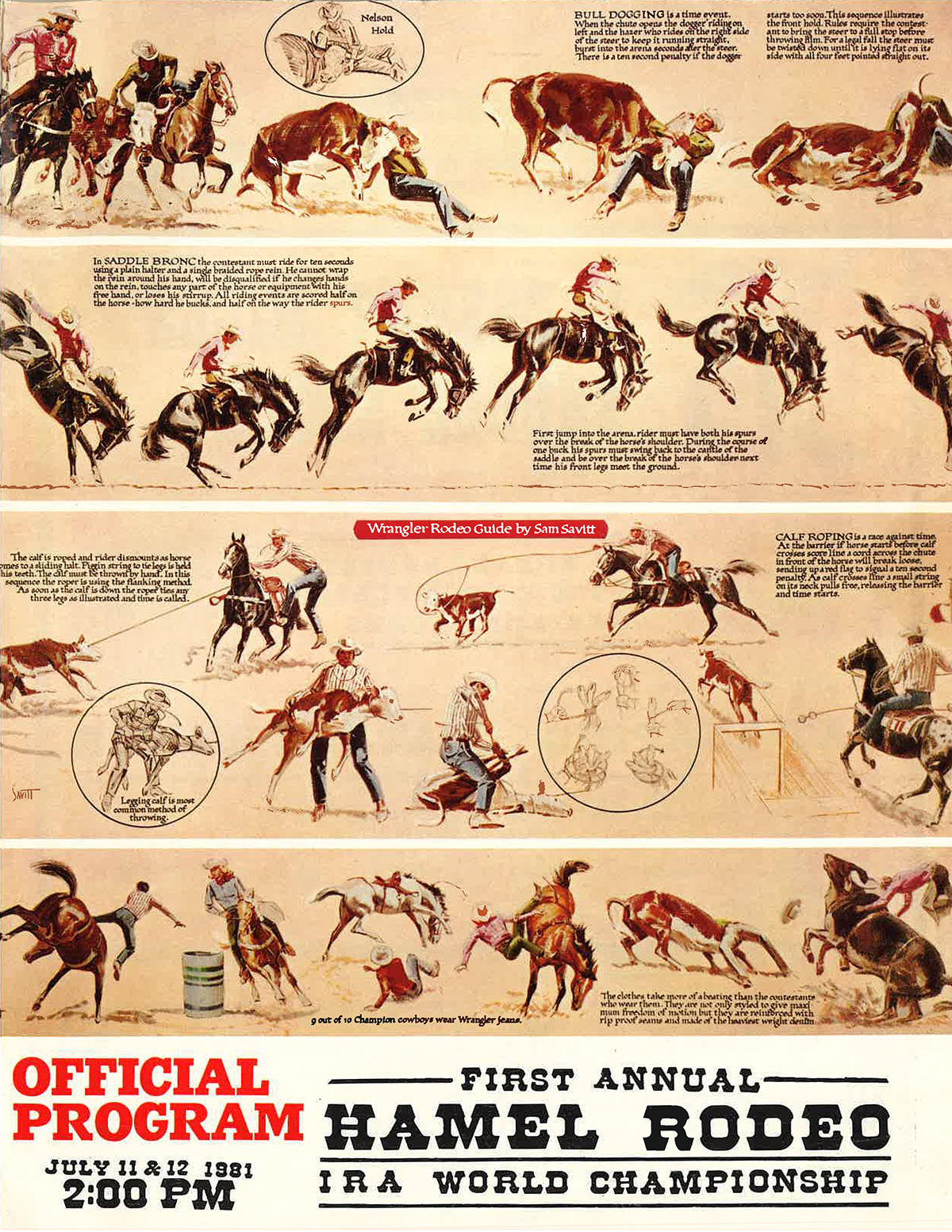June 30, 2022

by Sue Dorweiler
If you set out to raise more than $1,000,000 for your community, how would you do it?
Maybe you’d do what the folks in Hamel, Minnesota, did more than 40 years ago when they held their “first annual” Hamel Rodeo. Then as now, the rodeo employed an all-volunteer army. The 1981 rodeo began with a committee and a contract with a professional rodeo stock contractor. Back then, it also included an agreement to haul truckloads of dirt into the parking lot of the Medina Ballroom to make a suitable rodeo arena floor. The volunteers sold tickets, T-shirts, and buttons. They parked cars, flipped burgers, and sold beer and popcorn. Obviously, there was a lot more planning and organizing that went on behind the scenes, and even the first year was thoroughly envisioned and well-executed.
Those early successful results are still seen today. The upcoming 41st Annual Hamel Rodeo, now held at the Corcoran Lions Park in western Hennepin County, is a well-oiled machine.
The rodeo-as-fundraiser sprang from an idea brought forward by two brothers, Julius and Shorty Dorweiler (my dad and my uncle) which gave birth to the first rodeo is 1981. Many members of my family participate in the Hamel Rodeo and rodeos in other parts of the country. In my immediate family, there’s a bull rider, a barrel racer, a rodeo clown, and a rodeo announcer. Cast a wider net, and I can count a team roper, another rodeo clown, two more bull riders — and a high-school-age bull rider who is just getting started and already competing nationally.
Many people don’t realize that rodeo competitors pay a steep entry fee to compete. Unless they can find a sponsor, they also pay their own expenses to haul their horse(s) from home to the rodeos and back again. Rodeo winnings, if any, offset these expenses. Frequent winners are considered “in the money.” If you see a nice rig with a gooseneck trailer, this is also part of their own expense. Most have regular full-time jobs. They plan carefully to enter up to four rodeos per weekend in nearby locations. They have a lot of fun, but mostly it’s to make it pay. Rodeos have a lot of rules as well as money penalties if participants don’t hold up their obligations.
Before each rodeo, judges draw from the pool of entrants to get a pairing of animal and assigned rider. The rodeo stock contractor provides the bucking chutes, animal stock, and arena staff. Bucking horses, bucking bulls, steers, and calves are all part of the animal stock delivered to a rodeo. Besides the novelty acts (hired separately and purely for entertainment,) there are two kinds of competitive events in a rodeo. Timed events include team roping, calf roping, steer wrestling, and more — all of which involve the participant’s own trained horse. The other types of events are also timed, but in a different way. They answer the question “Can this participant stay atop this bucking horse or bull for a full eight seconds?” That doesn’t sound like long, but see it done before you decide it’s easy.
Sue Dorweiler grew up going to rodeos with her dad, Julius Dorweiler, and heard stories from his days as a rodeo rider, rodeo clown, and later a rodeo announcer. The tradition continued when little brother Chuck became an accomplished bull and bronc rider, inspired by dad and uncle Shorty.
Dick Squire has been the rodeo’s official photographer since the rodeo began in 1981. His photos here are from 1981–2021. Uncredited photos courtesy Hamel Rodeo social media.
 For more information
For more information
- 41st Annual Hamel Rodeo, Corcoran Lions Park, July 7–10, 2022
- The four-day festivities include five rodeo performances, Friday and Saturday night dances, parade, free pony rides for kids, kids stick horse races and calf scramble, Vendor Alley, and food provided by the local VFW.
- Buy tickets at hamelrodeo.org
Shorty Dorweiler was born in Hamel, Minnesota, and is CEO of the Farmers State Bank of Hamel that was opened in 1919 by his grandfather. But banking wasn’t enough for him. Shorty wanted to be a bull rider, so he learned the ropes on tours across the US and Canada. In 1981, Shorty and his brother Julius organized the Hamel Rodeo, a volunteer-run organization that donates the proceeds to other not-for-profits in the Hamel community.
Photo courtesy Dick Squire, 1985.
